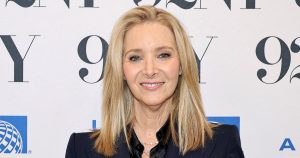New York City’s implementation of congestion pricing has catapulted it to the forefront of expensive US city entry for drivers, with fees reaching up to $27 for two-axle vehicles entering Manhattan. This represents a significant leap beyond other major cities with similar toll systems. San Francisco, with its comparable bay area geography and multiple bridge crossings, charges a maximum of $10.25 to cross the Golden Gate Bridge. Chicago’s Skyway, a major entry point to the city’s south side, peaks at $7.80. The substantial difference in pricing underscores the unique scale of New York City’s congestion challenge and the aggressive approach taken to address it. The estimated 700,000 vehicles entering Manhattan’s congestion zone daily translate to a potential $4 million per day in revenue for the Metropolitan Transportation Authority (MTA).
A comparative analysis of toll structures across major US cities reveals a spectrum of approaches and pricing strategies. San Francisco’s system relies on fixed tolls for each bridge, with the Golden Gate Bridge commanding the highest fee. However, planned increases will significantly raise costs in the coming years. Chicago’s Skyway toll, while lower than New York’s, also reflects recent increases and incorporates a tiered system based on vehicle type and time of day, echoing the user-fee model found in other locations. This system is designed to generate revenue for maintenance and operations without relying on public funds. Understanding these various models helps contextualize New York City’s approach and its potential impact.
Houston, grappling with its own traffic congestion issues, employs a variable toll system on its extensive Grand Parkway System and the Sam Houston Tollway. The cost fluctuates according to vehicle type, entry and exit points, and the availability of an auto-pay system. While a full loop on the Sam Houston Tollway can reach $14.40, daily toll road users often report significantly lower costs. The system, funded solely by user fees, aims to provide an alternative to congested free routes while generating revenue for road maintenance and expansion, reflecting the growing demand from Houston’s burgeoning population.
Further afield, Norfolk, Virginia, presents a distinct case with its Chesapeake Bay Bridge-Tunnel. This crucial link charges a substantial toll, reaching $21 during peak season, to access the city. This cost, while seemingly high, is justified by the significant mileage saved by utilizing the bridge-tunnel compared to alternative routes. The argument for value is further bolstered by the claim that the cost-per-mile for the Chesapeake Bay Bridge-Tunnel is the lowest among comparable tolled marine crossings in the region. This underscores the strategic use of tolls to offset infrastructure costs while providing an efficient travel option.
In contrast to the toll-based systems in other cities, Los Angeles and Atlanta offer alternative approaches to congestion management. Los Angeles primarily relies on High Occupancy Vehicle (HOV) and express lanes with dynamic pricing based on real-time traffic conditions. This variable pricing can range from a modest $0.10 per mile to a more substantial $2.40 per mile, incentivizing carpooling and offering faster commutes for a price. Atlanta’s system mirrors this approach with its Georgia Express Lanes, dynamically adjusting toll rates from $0.10 to $0.90 per mile during peak hours. This allows drivers to make informed decisions about using the express lanes based on posted toll amounts, providing flexibility while managing traffic flow. During off-peak hours or times of low demand, a flat rate of $0.50 per trip is applied, providing an affordable option when congestion is minimal.
The wide range of toll structures, pricing mechanisms, and congestion management strategies employed across these major US cities provides valuable context for understanding New York City’s new congestion pricing plan. While New York City’s maximum $27 fee appears high in isolation, it reflects the unique challenges of managing traffic in one of the world’s most densely populated urban areas. The revenue generated by this system is intended to support public transportation improvements, theoretically mitigating congestion by enticing drivers towards public transit alternatives. Whether this strategy achieves its goals and justifies the cost remains to be seen. Examining the successes and challenges of other cities’ systems can offer insights into potential pitfalls and avenues for success as New York navigates its new congestion pricing landscape.










